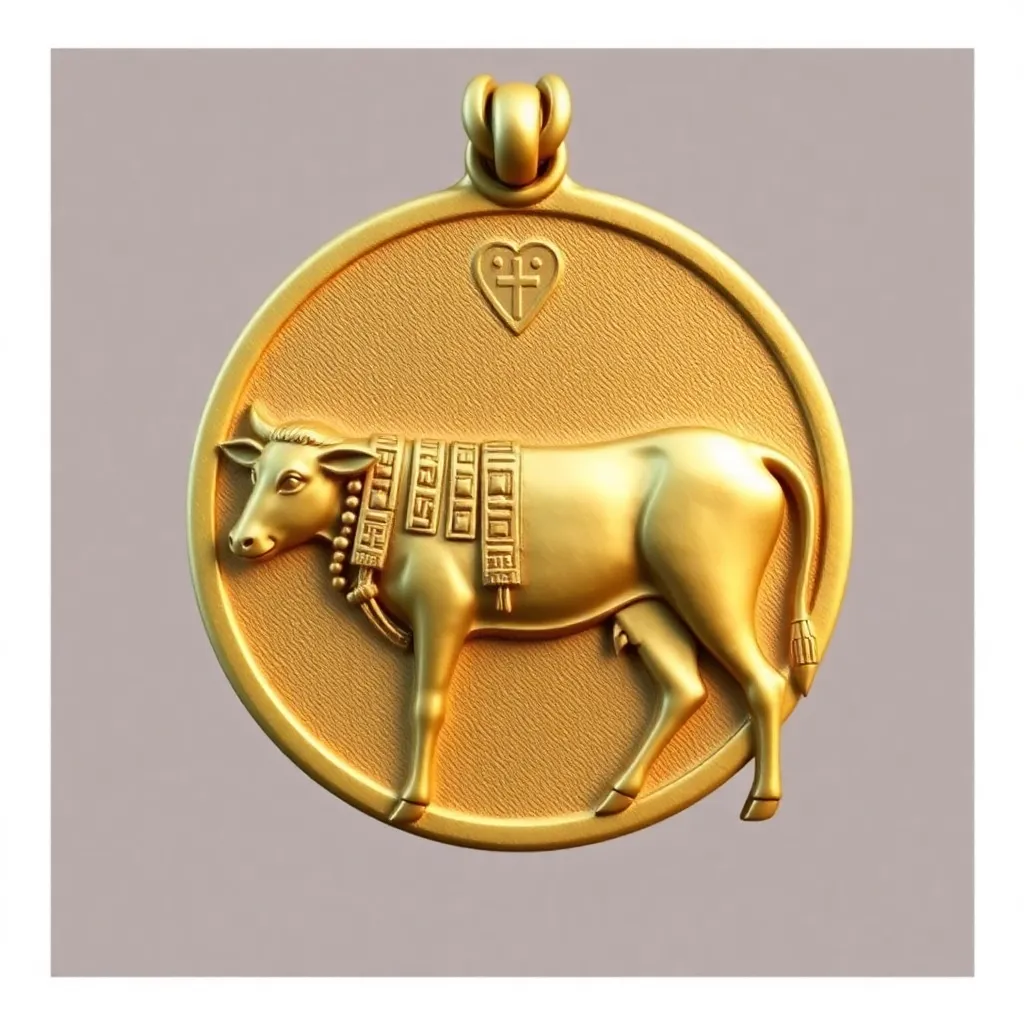The Symbolism of the Cow in Egyptian Amulet Design
I. Introduction
Amulets played a vital role in ancient Egyptian culture, serving as protective charms that provided their wearers with various benefits, ranging from health and fertility to protection against malevolent forces. Among the myriad symbols used in amulet design, the cow stands out for its deep-rooted significance in Egyptian mythology and daily life.
The cow, revered for its nurturing qualities, was closely associated with fertility, motherhood, and sustenance. This article aims to explore the symbolism of the cow in ancient Egyptian amulet design, examining its historical context, its embodiment in the figure of the goddess Hathor, and its lasting impact on both ancient and modern cultures.
II. Historical Context of Cows in Ancient Egypt
Cows were among the first domesticated animals in ancient Egypt, providing sustenance and labor. Their significance to the agricultural economy cannot be overstated.
- Domestication of Cows: Cows were domesticated around 4000 BCE, becoming integral to Egyptian society.
- Source of Sustenance: Cows provided milk, meat, and leather, making them essential for survival.
- Labor: Beyond food, they were also used for plowing fields, contributing to agricultural success.
Furthermore, cows were often associated with fertility and motherhood, symbolizing the nurturing aspects of life, which would later be reflected in religious practices and beliefs.
III. The Cow Goddess: Hathor
Hathor, one of the most beloved deities in the Egyptian pantheon, is often depicted as a cow or as a woman with cow horns. She embodies several aspects of life that were crucial to the Egyptians.
- Significance: Hathor was revered as the goddess of love, beauty, music, and fertility, making her a central figure in many rituals.
- Symbolism: Her cow form represents nourishment and motherhood, reflecting the deep connection between fertility and the natural world.
- Amulet Design: Amulets featuring Hathor were believed to provide protection and blessings, particularly for women during childbirth.
IV. Amulet Design Elements Featuring Cows
The design of cow-themed amulets is rich in symbolism and artistry, with various elements reflecting the cultural significance of cows.
- Common Motifs:
- Cow-shaped amulets
- Amulets depicting Hathor with cow horns
- Hieroglyphs associated with fertility and protection
- Techniques and Materials:
- Materials such as faience, gold, and stone were commonly used.
- Intricate carving and inlay techniques demonstrated the skill of ancient artisans.
- Variations Over Time: Designs evolved from the Old Kingdom through the Ptolemaic period, reflecting changes in religious beliefs and artistic styles.
V. Symbolic Meanings of Cow Amulets
Cow amulets carried a multitude of meanings and were often imbued with specific purposes.
- Protection and Blessings: Cow amulets were believed to protect mothers and children, blessing them with fertility and health.
- Abundance and Prosperity: The cow’s connection to sustenance made these amulets symbols of wealth and abundance.
- Afterlife Guidance: Many believed that cow amulets could offer spiritual guidance in the afterlife, aiding the deceased on their journey.
VI. Case Studies of Notable Cow Amulets
Archaeological discoveries have unearthed numerous cow amulets, each providing insights into the beliefs and practices of ancient Egyptians.
- Specific Amulets: Notable examples include amulets found in tombs that depict Hathor in various forms.
- Inscriptions and Iconography: Many amulets are inscribed with prayers and blessings, enhancing their protective qualities.
- Context of Use: These amulets were often placed with the deceased or worn by individuals in daily life, indicating their importance in both the mundane and the spiritual realms.
VII. The Legacy of Cow Symbolism in Modern Culture
The symbolism of cows continues to resonate in contemporary culture, reflecting ancient beliefs in new forms.
- Art and Jewelry: Modern jewelry often incorporates cow motifs, celebrating the ancient traditions.
- Spiritual Practices: The influence of Egyptian beliefs can be seen in contemporary spiritual practices that honor fertility and motherhood.
- Cultural Heritage: Cow amulets represent a vital part of Egypt’s cultural heritage, inviting further exploration and appreciation.
VIII. Conclusion
The cow’s symbolism in Egyptian amulet design is a testament to its significance in ancient society. From the nurturing qualities of cows associated with Hathor to the practical uses of cow amulets for protection and blessings, this symbol has endured through the ages. Today, the legacy of these symbols continues to inspire and inform our understanding of ancient Egyptian culture and spirituality.
As we reflect on the enduring relevance of cow symbolism, we encourage further exploration of the rich tapestry of ancient Egyptian mythology and the intricate designs of their amulets, which continue to captivate and educate us about a time long past.




